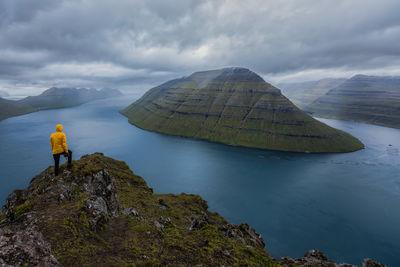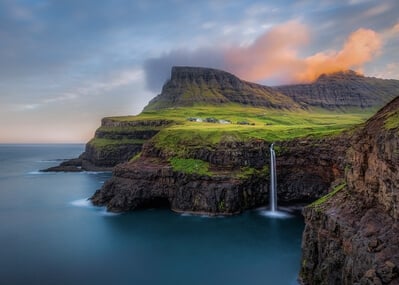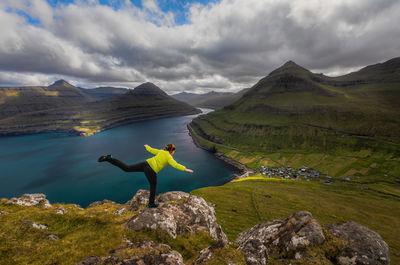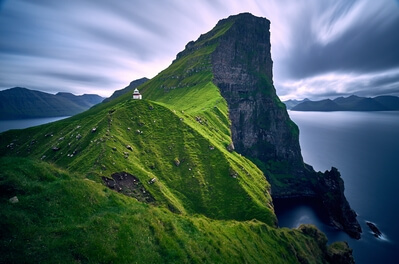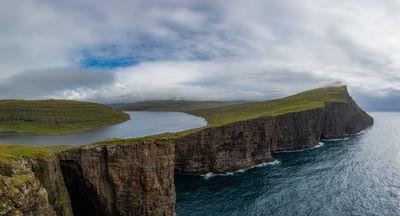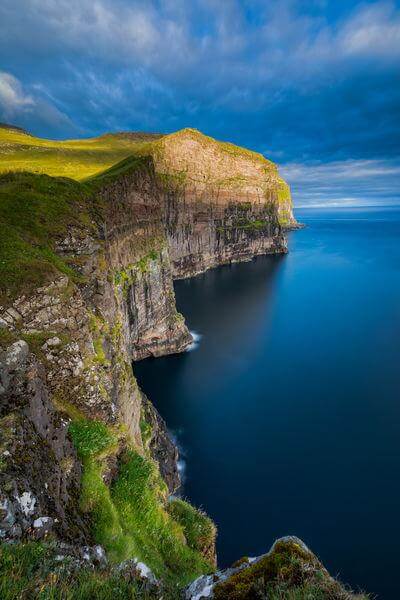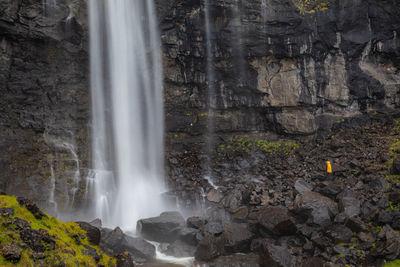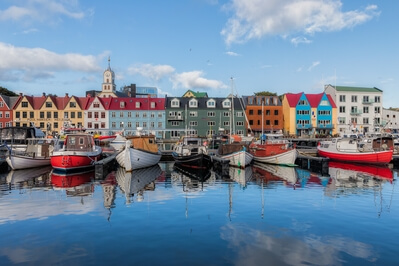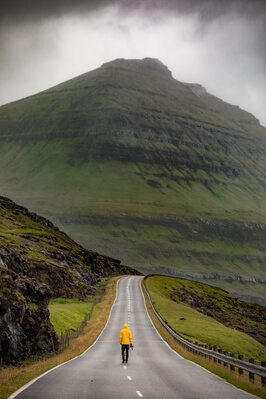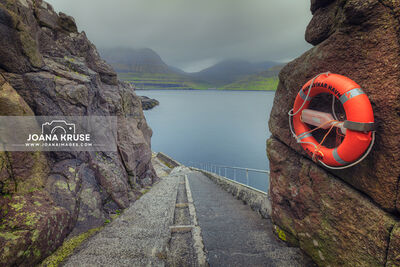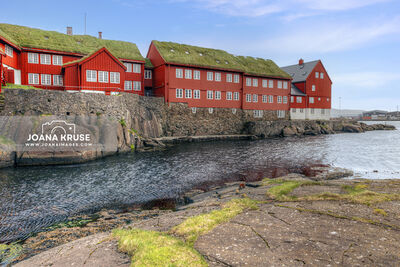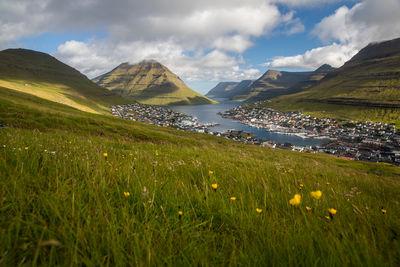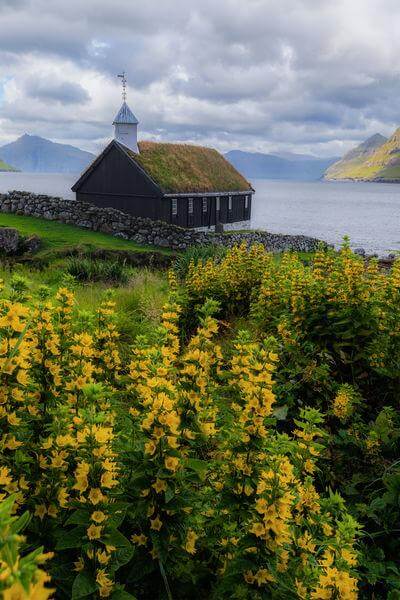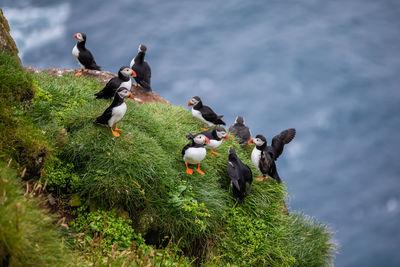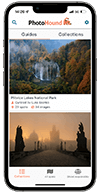The photography guide to
 Faroe Islands
Faroe Islands
Faroe Islands photography guide
Our contributors have added 33 photo spots to this Faroe Islands photo guide. Have you discovered an amazing new location in Faroe Islands?
Introduction
The Faroe Islands is an island archipelago halfway between Norway and Iceland. It is an autonomous territory within the Kingdom of Denmark. Whilst only a short flight from the UK, Copenhagen or Denmark, the Faroe Islands is still a relatively remote tourist destination and remains a pristine natural paradise.
There is much to discover on this patchwork of 18 interlinked islands which on the one hand has an ancient and undiscovered feel to it, and yet on the other has a modern outlook with an impressive series of interconnecting road tunnels and a surprisingly good mobile phone signal for such a remote destination!
Sharing many geographical and cultural similarities with neighbouring Norway, Iceland and Scotland the Faroe Islands have an unspoiled beauty and ruggedness ideal for landscape, cultural and bird photography. Photographers will enjoy exploring multi-coloured hamlets, turf houses and wooden churches, moorlands and dramatic coastal scenery.
The Faroe Islands are known for unpredictable weather conditions, which most of the time changes from sun to fog or rain in a few minutes. The islands terrain is covered with arctic-alpine plants, wildflowers and grassy landscape, with tousant streams and waterfalls. There is only one city, which is the capital Tórshavn city, few towns and many small villages. The wildlife fauna consist of many seabirds with the most popular Atlantic puffins. There are few species of wild land mammals in the Faroe Islands today, all introduced by humans. And the most know are feral sheep. It's not a coincidence that the name Faroe Islands means sheep islands.
Most popular Faroe Islands photo spots
Travel
Two airlines fly to the Faroe Islands; Atlantic Airways and Scandinavian Airlines.
The small but beautifully formed capital, Tóshavn has many accommodation options and makes a good base from which to explore the Faroe Islands. Tourism hasn’t yet exploded in the Faroes, but accommodation can get booked up quickly and last minute reservations can be difficult. Book as soon as you know your dates.
Most islands are connected by an excellent infrastructure of roads, bridges and subsea tunnels, making it effortless to get around if you rent a car. The public transport its not particularly usable, especially for photographers, because it tends only to connect the main cities and towns.
You'll find there are also many gravel roads so make sure to navigate thesewith extra car. Some roads are extremely narrow and have passing points. These lay-bys should not be used for parking.
The two sub-sea tunnels in the Faroe Islands charge a toll payment of DKK 100,- (approximately €13) for a return trip. You can pay online, or drive through the tunnel without stopping and pay at one of these petrol stations:
Effo – Kollafjørður
Effo – Gundadalur
Effo – Klaksvík
Magn – Klaksvík
Magn – Gøtudalur
Effo – Leirvík
Magn – Miðvágur
If payment is not made within 3 days, the bill will be sent by post to the owner of the car.
Make sure you pack appropriate equipment for spending time outdoors; bring warm layers, waterproofs and sturdy footwear. It's a good idea to let someone else know your itinerary before you start exploring the Faroe Islands and we would recommend bringing a head torch, map, compass and a GPS with you, particularly when travelling in more remote areas. Decent photography gloves will also be useful for this trip. Check the weather forecast before you set off and remember that it can change suddenly and dramatically.
Remember to charge your mobile phone battery before setting off and bring a power bank for extra charge. In many areas you will find there is limited or no signal.
The Faroese emergency number is 112.
Top Picks
Gásadalur and the Múlafossur Falls
Múlafossur waterfall cascades straight into the North Atlantic and has to be seen to be believed. The nearby tiny village of Gásadalur is full of charm and colour.
Mykines Island
Spend a day on car free Mykines (pronounced Mitch-en-ez) which is famous as the breeding ground for many migratory seabirds, including the Puffin. Don't miss the lighthouse while you're there
Tórshavn old town dates back to the 1400s, and the narrow, winding lanes are filled with traditional grass-roofed Faroese houses and stone buildings still used by locals today.
Gjogv
Famous for its scenic 200m gorge which forms a natural harbour that was once the heart of a thriving fishing industry. The colourful turf-roofed cottages are just charming. Climb the path to the cliff-tops for spectacular views.
Saksun Village
The village of Saksun is not to be missed with its turf-roofed cottages and fjord with a tidal lagoon. There are numerous hiking paths, viewpoints, and picturesque waterfalls here to keep you busy with your camera all day.
Responsible Photography
As tourism in the Faroe Islands increases, we as photographers have an extra responsibility to take care of the islands if we visit. Nature is the key reason for visiting them and we need to do all we can to preserve their pristine nature. Be aware of your impact as you travel around the islands and make sure you play your part in following rules and guidelines and doing all you can to leave no trace and take away nothing but great photos.
The Faroe Islands 'close' completely to tourism one weekend every spring and open instead to 'Voluntourism' where visitors sign up to help with conservation projects.
A few hiking of the more popular routes in the Faroe Islands introduced restrictions and require an advanced payment or for you to join an organised visit. Check the links below for guided and self-guided walks where an advance fee is required.
In general, flying drones in the Faroe Islands is permitted, provided you follow all specified conditions - see links section below. Follow the sign-posted regulations and in particular be considerate of the environment, bird- and wildlife as well as the privacy of locals.
Links
Visit the official site of the Faroe Islands
Sub-sea toll website
Public Transport
Guided Walks
Guide to hiking the mountains
Guidance for flying UAS -Drones
Join the Voluntourism programme
Car rental options
Curated By
We hope you enjoy this guide to photographing Faroe Islands - don't forget to share your images on PhotoHound and tag us on social media using hashtag #photohound
